For as long as there have been families in New Jersey, there’s been a need for milk. New Jersey dairy farmers also wanted in on the action as they started looking for ways to sell milk directly to the public. We travel back to the 1940s when the craze was vending machines. It was thought that the vending machine would take over everything being sold to the public ranging from postcards, to cigarettes, to soda, gum and yes milk. But milk had a problem, it had to be kept cold 24/7. The thought community got together and we now get to take a look back at the great legacy of milk vending in New Jersey.
NOTE: As with all Mr. Local History retrospectives, we often update the post when we learn stories and are sent photos from our community. We will continue to grow this piece as information becomes available. So please continue to check back for updates.
Mr. Local History Project
Vending History
The first practical, commercial use of vending machines (also called slot machines) in the US was in 1888, when coin slotted vending machines were used to sell chewing gum on the platforms of the New York City elevated railway. Then in 1890, in Paris, France, the first beverage vending machine allowed people to buy beer, wine, and liquor. Fast forward to1947 when the Rudd-Melikian company of Philadelphia, Pennsylvania introduced the coffee vending machine. Vending was a hit.
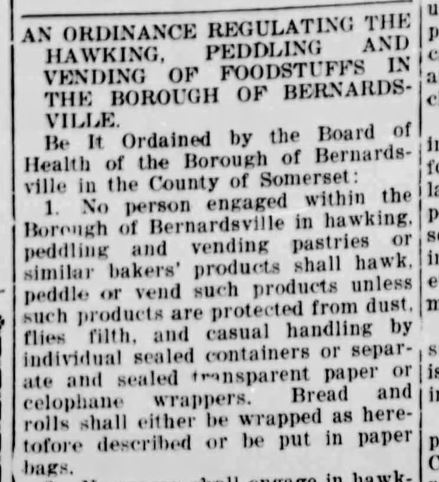
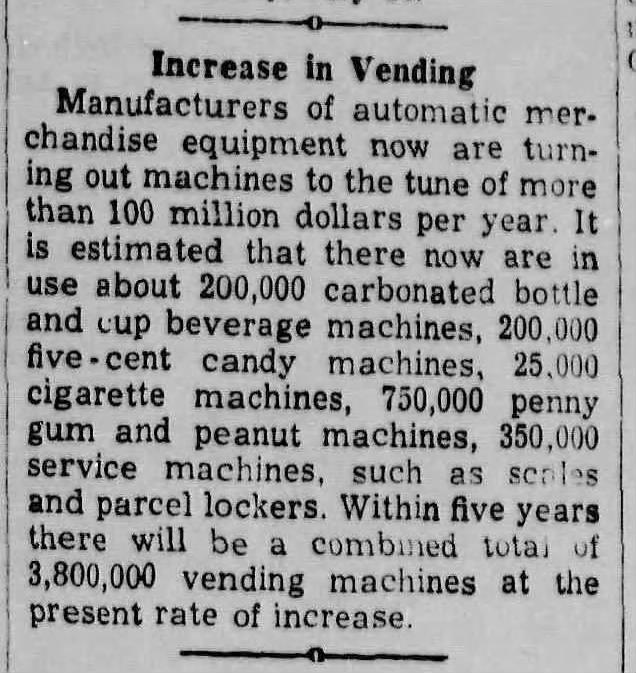
The first milk vending machines were made in 1896 by the Quinsanna Company in Berlin, Germany. The Vendo Milk Machine (below) was introduced in 1952 and produced until 1959. Milk vending machines typically sold 1/2 pint, quart and half gallon cartons of milk to customers. When people started leaning more and more towards automated self -service options and they didn’t need to bring their own milk container and could get their milk 24 hours a day.
As American’s love gadgets, some great names were coined to identify the machines like; the silent salesman, sleepless milkman and the mechanical milkman. Some machines dispensed milk using paper cartons while others dispensed in glass bottles. Surveys in the late 1950s indicated consumers preferred glass over paper by a 3:1 ratio. Nine out of ten vending machines used paper dispensing methods over glass. Those studies in Vermont also showed younger consumers preferred chocolate milk over plain milk. Half pints were also the most popular in schools and factories as it was estimated that the vending machine would need to sell 60 units per day to break-even. And interestingly enough, back then customers often bought cold, fresh milk rather than other beverages if given the opportunity.
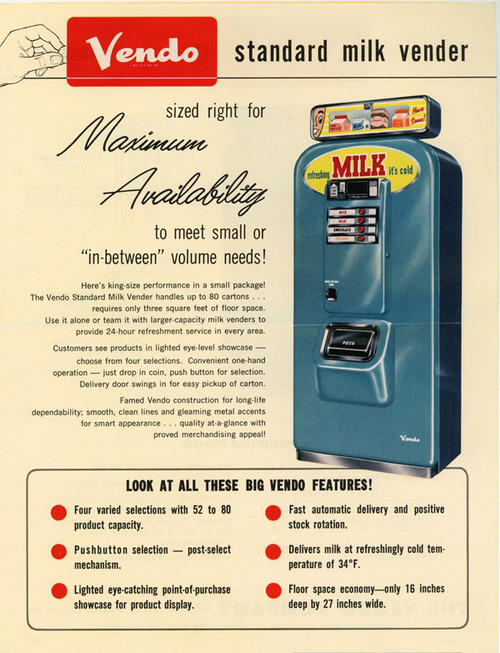
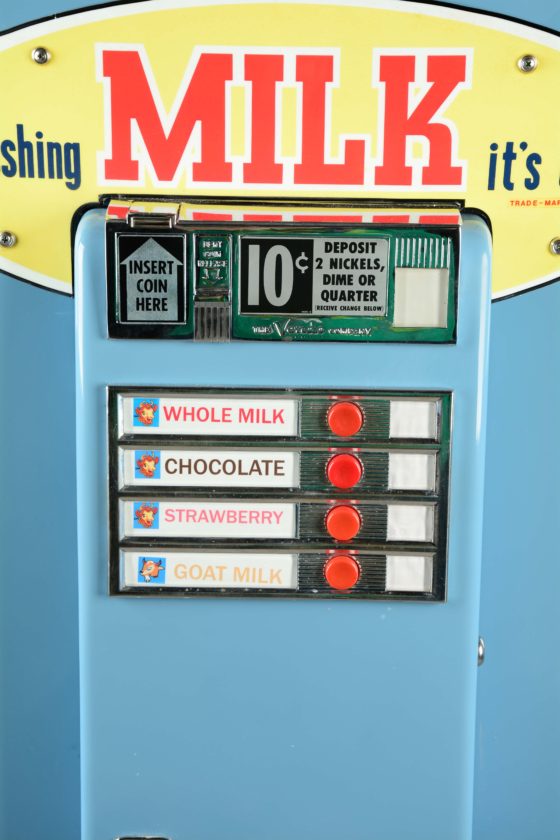
Another popular milk vending machine manufacturer showed up in the 1950s, in Leicester, England. Kirby & West Dairy was a dairy business that started in the 1860s in Highfields, Leicester. James Kirby, a “cow keeper”, established the business. In 1916, the Smith family took control of the business. Kirby & West Dairy invented milk vending machines that provided fresh, chilled milk 24 hours a day. The machines were placed in factories and were popular with workers. They also produced the first electric milk float.
Milk Vending Machine Types
Most milk vending machines hit their heyday from the late 1940s thru the 1970s. Most historians agree that the demise of the milk vending machine was modern refrigeration advancements and 24/7 stores like 7/11, Krauzers, and 24 hour supermarkets like Pathmark.
But we did get ahold of a number of classics. Bring back any memories? Click any image to enlarge.
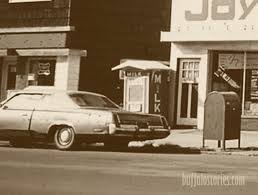
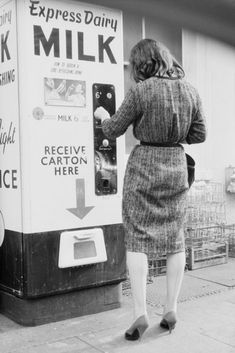
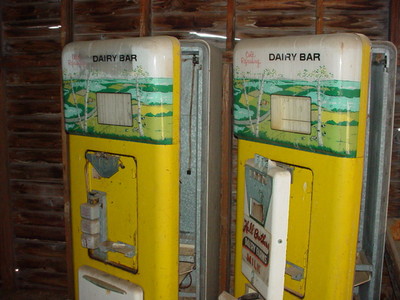
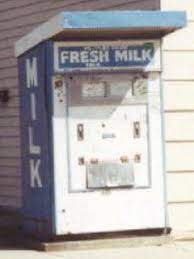
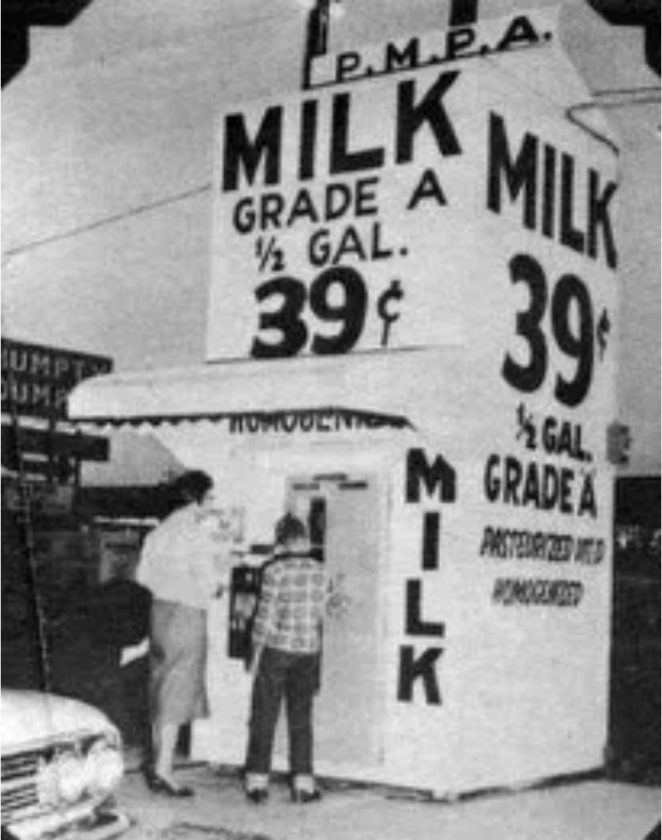
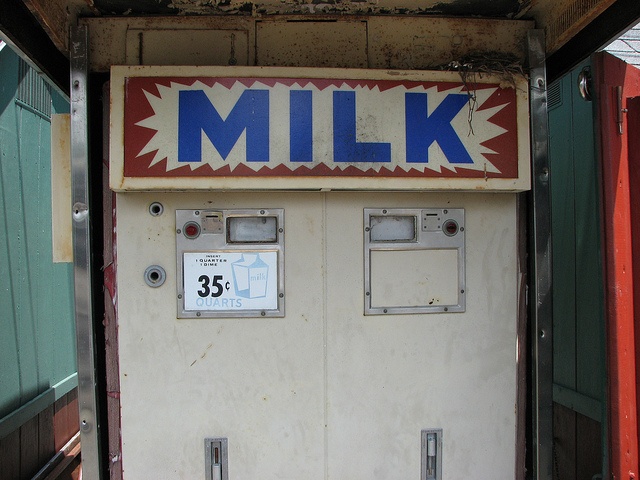
Remembering New Jersey Milk Vending Machines
Residents from all across the Garden State told us where they remembered their favorite milk vending machine. As part of our research we leverage social media to track down the answer as to where those iconic milk machines were.
Below are just a few of the milk vending machines Jerseyans remember. Hundreds of locations were remembered.
While they are ALL are gone today. Do you remember one?
Is the machine you remember listed below?
Post in the comments at the end of this story if you’d like to recognize your Jersey milk vending machine (New Jersey only please!)
- South Plainfield – Hamilton Boulevard in South Plainfield, quart of milk 26 cents 1960
- Jersey City – Kennedy Boulevard Bower Street in the Heights and Kennedy Boulevard at Observer Highway
- Linden – St. Georges Ave
- Cliffwood Beach – Sure do we would buy milk from them on Sundays when all the stores were closed (blue laws) on the corner of Rt. 35.
- Irvington – They dispensed the milk cartons. Some of the machines looked exactly like a very large milk carton
- Linden – Lambert dairy from Linden, New Jersey had them scattered throughout the area. 50 cents for a cardboard half gallon
- Elizabeth – Corner of Elmora and Jersey Avenue
- Bedminster – 206/Lamington Rd intersection. I remember getting a quart one evening after all the stores had closed.
- West Millington – On Stonehouse Road and there was one at the end of Haas Road
- Newark – Amper Parkway and Bloomfield Avenue next to the gas station.
- Newark – Summit and Keer Avenue Newark, NJ,
- Hillside – Corner of Winans Avenue and Leslie Street
- Irvington – Clinton Ave and Kerrigan Blvd
- Hackensack – State Street and Cleveland Street
- Mahwah – by Herk’s Hot Dogs
- Hackensack – one on Union St, across from Union St Park, we use to kick it and get “free” chocolate milk….
- Belmar- probably early 70’s
- Freehold – Main street between the two gas stations
- Scotch Plains – The Esso station
- Boonton – Fifty cents half gallon early 60s
- Piscataway – Plainfield Ave and River Road in the 60’s
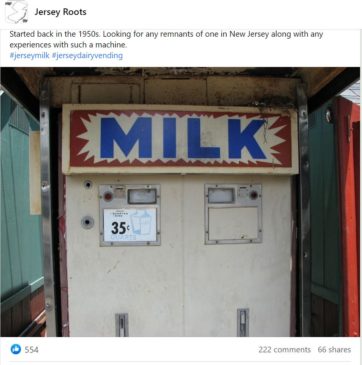
Public Health Challenges
Public health and safety quickly became one of the key challenges for milk vending machines and townships took action. Licensing became a major ingredient that vending machine owners needed to address. Instead of being on the roadside, gas stations were one of the early adopters of milk vending machines because towns required them to be “attached” to a building vs freestanding on the roadside.
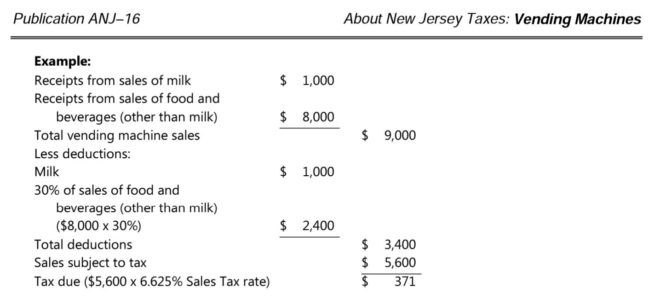
In 1959, Totowa’s Board of Health set new rules for milk vending stating ” The interior of such machine shall be so designed and constructed as to be readily cleaned and kept clean. The refrigeration unit shall be of sufficient capacity to keep the entire contents of milk or cream at a temperature of 50° F. or below. The vending machine shall be equipped with an automatic cutoff device that locks the machine when the temperature of the interior where milk or cream are stored goes above 50° F., and then returns patrons’ coins. No milk then in the machine shall thereafter be sold from vending machines. Each machine shall contain a thermometer with the Fahrenheit scale thereon.
Totowa Board of Health – 1959
Where Did the Machines Go?
As you can guess, unlike what we’re seeing today with technology disrupting just about every business category, the milk vending machine held its head high from the 1950s, grew in the 1960s, and then started to die in the 1970s. Convenience stores, as they were called, started selling milk at very affordable prices. Milk men were also dispatched from dairy farms. And yes the monster corporate entities like Clinton in Newark, FarmFresh, Cumberland Farms all helped put an end to the refrigerated milk vending machine. While a few lingered into the 1980s, the end of the milk vending machine was complete. Dairy farms did try to make a go of milk vending machines as well, but town ordinances quickly put an end to the idea when they stated they needed to be attached to a building.
There IS a Milk Vending Future
Yes there is a milk vending future and Europe has taken the lead. If you want to see the latest in milk vending you most likely have to go to Ireland and the UK as they are taking the torch and finding new ways to offer milk from farm to table and take out the middleman. Challenges still exist. For example; available in Italy since 2004, vending machines that dispense unpasteurized milk have proliferated throughout Europe in recent years. But raw milk is a polarizing topic.
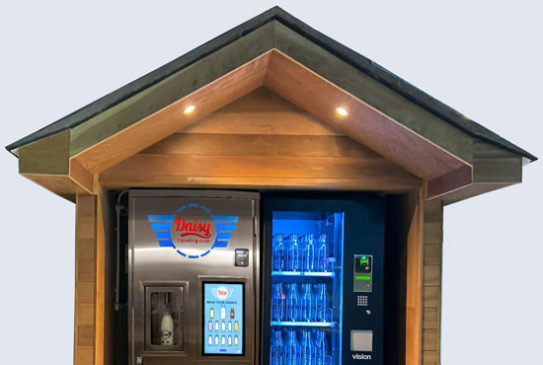
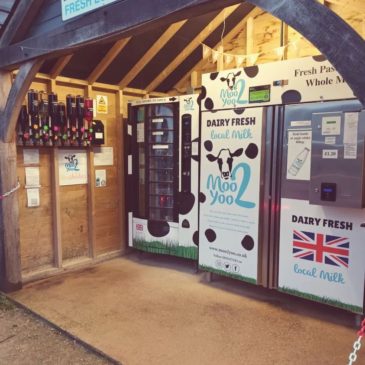
Much like the political party you choose to support, it’s a topic rife with strong opinions. In the U.S., raw milk sales are heavily regulated and banned outright in several states. Within the EU, though, countries are left to make their own laws on how and if raw milk may be sold. Proponents say high-tech features make the milk machines safe. Special valves stop the milk from flowing if it gets too warm, and texts are sent to the farmer if there is a malfunction or if the milk supply is running low. In Italy, home to 1,000-plus raw milk vending machines, regulators have cracked down on sales, suspending or shutting down machines that don’t meet hygiene standards. A study conducted in Northern Italy found that the milk samples collected from vending machines showed a significant elevation in total bacterial counts when compared to bulk tank milk samples.Machines that remain must carry warning signs, advising buyers to boil their milk before drinking it.
Do You Remember a Milk Vending Machine?
Many of our Jersey history fans remember the legendary milk vending machine. They remember it vividly, being sent by their parents to the machine with coins to bring home cold dispensed cartons of milk. If you remember one in New Jersey, post it in the comments with the year, town, and street name. Also, how much did you pay?

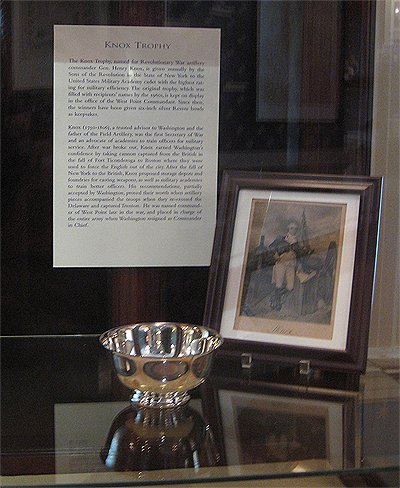
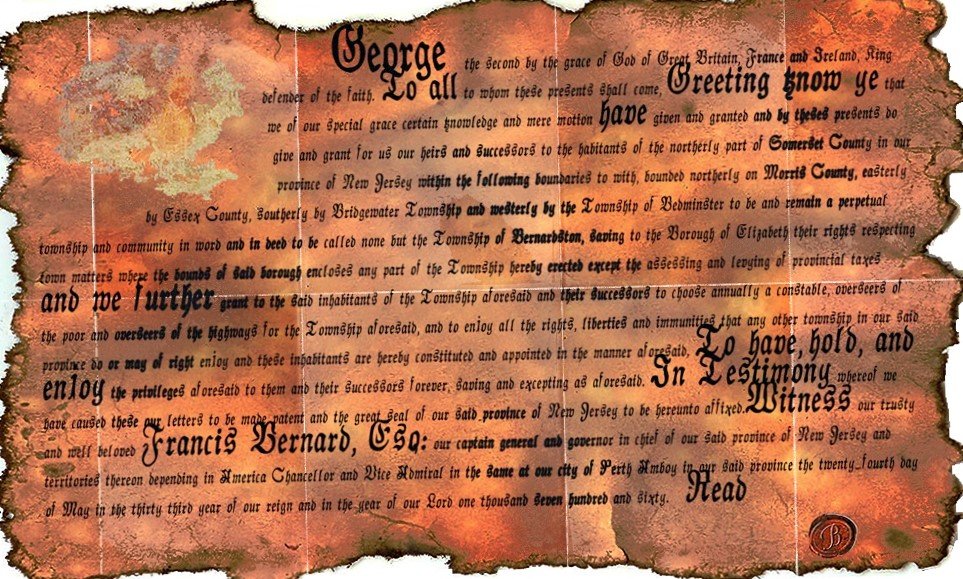
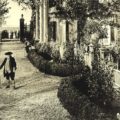
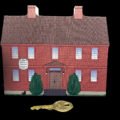
There was a milk vending machine on the end of Woodside Ave in front of a small convenience store I think called Woodside Deli! I was very young about 5 and was there till I was about 11 in 1070. My Dad would go get at night but then Garden State opened when they took that down! It was green & white it looked like it had a tree on the carton! Maybe Tuscan or Borden sponsored because it was in Newark & it was mostly all Catholics, Irish : Italian neighborhood then! Was in North Newark Forest Hills! Safe & beautiful homes! It’s not the same there? We all left! Parents mostly gone & we are grandparents now! Progress sucks!!! 😞♥️
There was one in Edison on Route 27 at Duclos Lane. It was 26 cents but I recall it varying a penny or two, yes, up and down over many years.